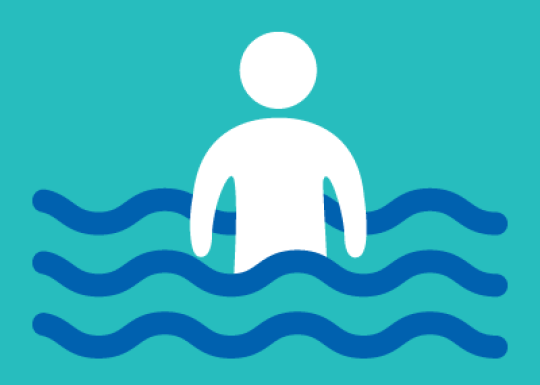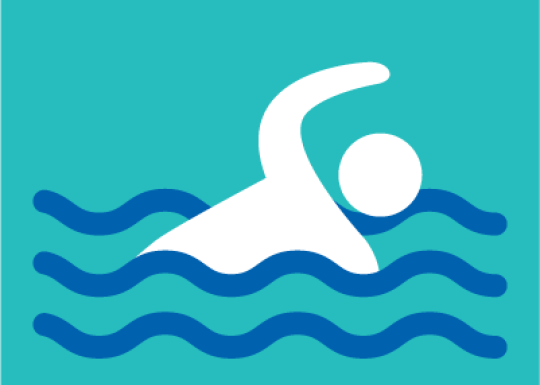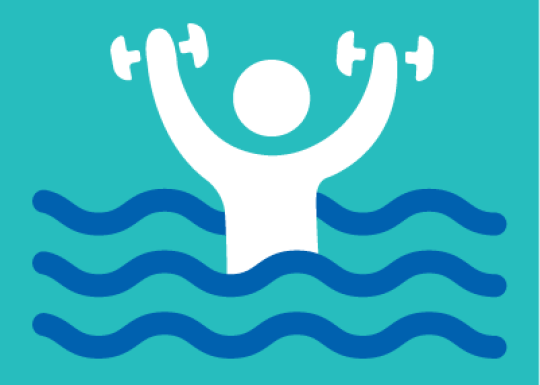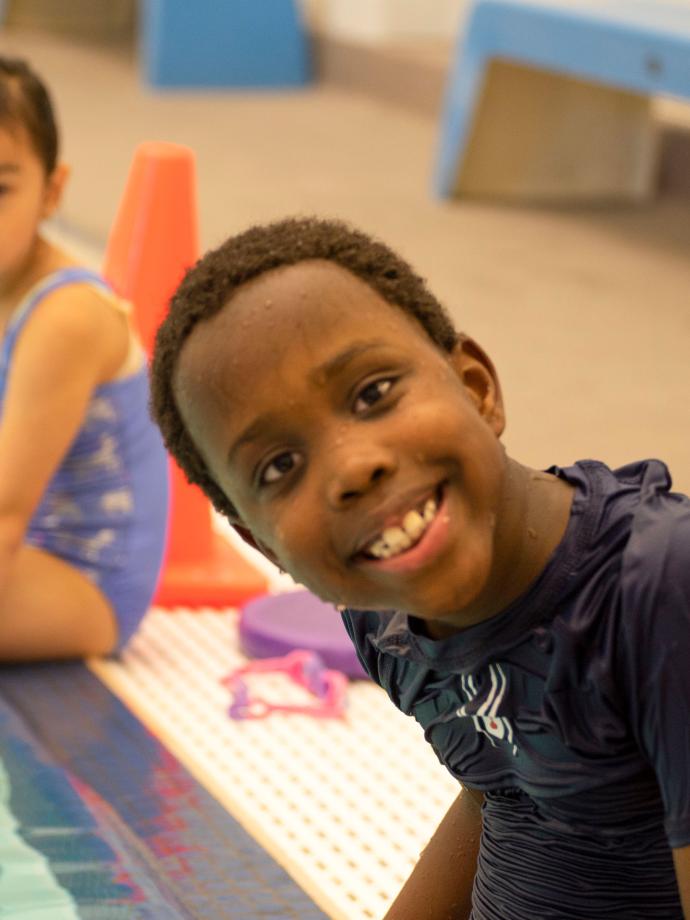Refining Swim Strokes, Building Confidence
Having mastered the fundamentals, students learn additional water safety skills and build stroke technique, developing skills that prevent chronic disease, increase social-emotional and cognitive well-being, and foster a lifetime of physical activity. Whether you are looking to improve your health, enhance your mental well-being, or find a sense of spiritual fulfillment, learning new swim strokes can provide all of these benefits and more. So, dive in and experience the many benefits that swim strokes have to offer.

Stroke Introduction
School Age 4
In the Stroke Introduction class, basic stroke techniques in front crawl and back crawl are taught while also emphasizing water safety through treading water and elementary backstroke. Participants in this stage must be able to swim independently on front and back before enrolling.
During lessons, participants learn how to do front crawl with rotary breathing, back crawl, elementary backstroke, breaststroke kick, butterfly kick, and tread water. Additionally, they will work on improving their ability to swim with any stroke or combination of strokes.

Stroke Development
School Age 5
In Stroke Development, the focus shifts to introducing breaststroke and butterfly, while also continuing to reinforce water safety through treading water and sidestroke. Participants continue to improve their front crawl, back crawl, and sidestroke. In addition, they will learn how to do butterfly with simultaneous arm action and kick, and improve their ability to tread water.

Stroke Mechanics
School Age 6
In Stroke Mechanics, the goal is to refine stroke technique on all major competitive strokes and encourage swimming as a healthy lifestyle. Participants work on perfecting their front crawl and back crawl, as well as their elementary backstroke or sidestroke, breaststroke with open turn, and butterfly.
Additionally, participants learn to retrieve objects off the bottom and tread water. This stage is all about helping participants become confident and skilled swimmers.

What to Expect in Your First Lesson
On your first day of class, you will meet your instructor on the pool deck. During this time the instructor will review basic pool rules and expectations of how class will proceed.

Items to Bring
When preparing to come to swim class, please bring the following items:
- Goggles
- Appropriate swim wear
- Towel
Other items that may be needed during the lesson will be provided by the instructor. Swim caps are optional
When checked in at the Welcome Center, you will want to head to the pool deck through the locker room or family locker room. Once on the pool deck, look for a sign with your class name. If you are unable to find your class, feel free to ask any Y staff so they can direct you on where to go.
Yes! The YMCA and our local health department requires all swimmers to take a cleansing soap shower before entering the pool. A swim cap may be worn in lieu of washing hair.
Yes, if you would like your child to wear goggles or a swim cap during their lesson, you will need to provide your own. Goggles are highly encouraged in stages 4-6. Swim caps are optional.
Proper swim attire should provide appropriate swimsuit area coverage and avoid heavy cotton or denim jean-like materials.

